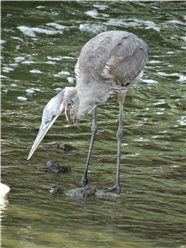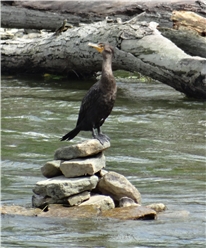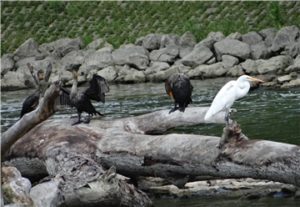
Plague Journal, Hungry
Yesterday I took a late August bike ride. I followed the bike path along the Fox River from Batavia to Aurora. The asphalt path eased my fifteen mile journey, following the river under the trees, shaded from late summer sunlight. The journey concluded with a rest, reading for a while under a massive old oak tree. Seated with my back against the trunk of the old tree, I contemplated the river. I kept company with a dozen or so geese who were feeding nearby on the lawn.
 Sounds idyllic does it not? A perfect late summer afternoon in the Midwest, a pleasant bike ride, along a path created and maintained by the Fox River Valley Park District. Nature and human ingenuity in a designed, managed environment.
Sounds idyllic does it not? A perfect late summer afternoon in the Midwest, a pleasant bike ride, along a path created and maintained by the Fox River Valley Park District. Nature and human ingenuity in a designed, managed environment.
My better judgment tells me that is a partial picture, a somewhat misleading story. Nature is a human label by which we designate everything around us — the earth itself, flora and fauna, geese, the river, everything that lives in the river and in the forest around the river. Typically our abstraction “nature” entails belief that we humans are separate, ubermensch, superiors, in a supervisory relation to Nature.
 Such could not be further from the truth. We are part of nature, from our first cry after emerging from our mother’s body, to the day of our departure when those who know our name will surround our coffin as it is lowered into the earth. And Nature is always hungry. The placid, idyllic, interpretation is a convenient illusion. Nature is an energy machine, a complex ebb and flow, using energy to maintain itself. Nature is an energy eater, taking what is found.
Such could not be further from the truth. We are part of nature, from our first cry after emerging from our mother’s body, to the day of our departure when those who know our name will surround our coffin as it is lowered into the earth. And Nature is always hungry. The placid, idyllic, interpretation is a convenient illusion. Nature is an energy machine, a complex ebb and flow, using energy to maintain itself. Nature is an energy eater, taking what is found.
I took these photographs over the weekend of waterbirds that live along the Fox River. As beautiful as the heron is to our eye, make no mistake, the bird always has a gimlet eye upon the surface of the water. The bird is interested in anything which swims  under the surface of the water. It is hungry or soon will be. A hunter is always hungry.
under the surface of the water. It is hungry or soon will be. A hunter is always hungry.
The banner photo is from the New York Times. The photo is of a giant wave generated by hurricane Ida impacting what appears to be a seawall on the Louisiana coastline Sunday. An observer takes a selfie snapshot of himself with the giant wave in the background. The massive storm rapidly, in less than 24 hours, reached near Cat 5 force from a 85 mph Category 1 storm. The storm drew energy from the abnormally warm ocean water in the Gulf. Climate warming.
Contemplating the man with raised iphone so close to the collapsing wave the thought crossed my mind: I suppose it is always a good day to die.